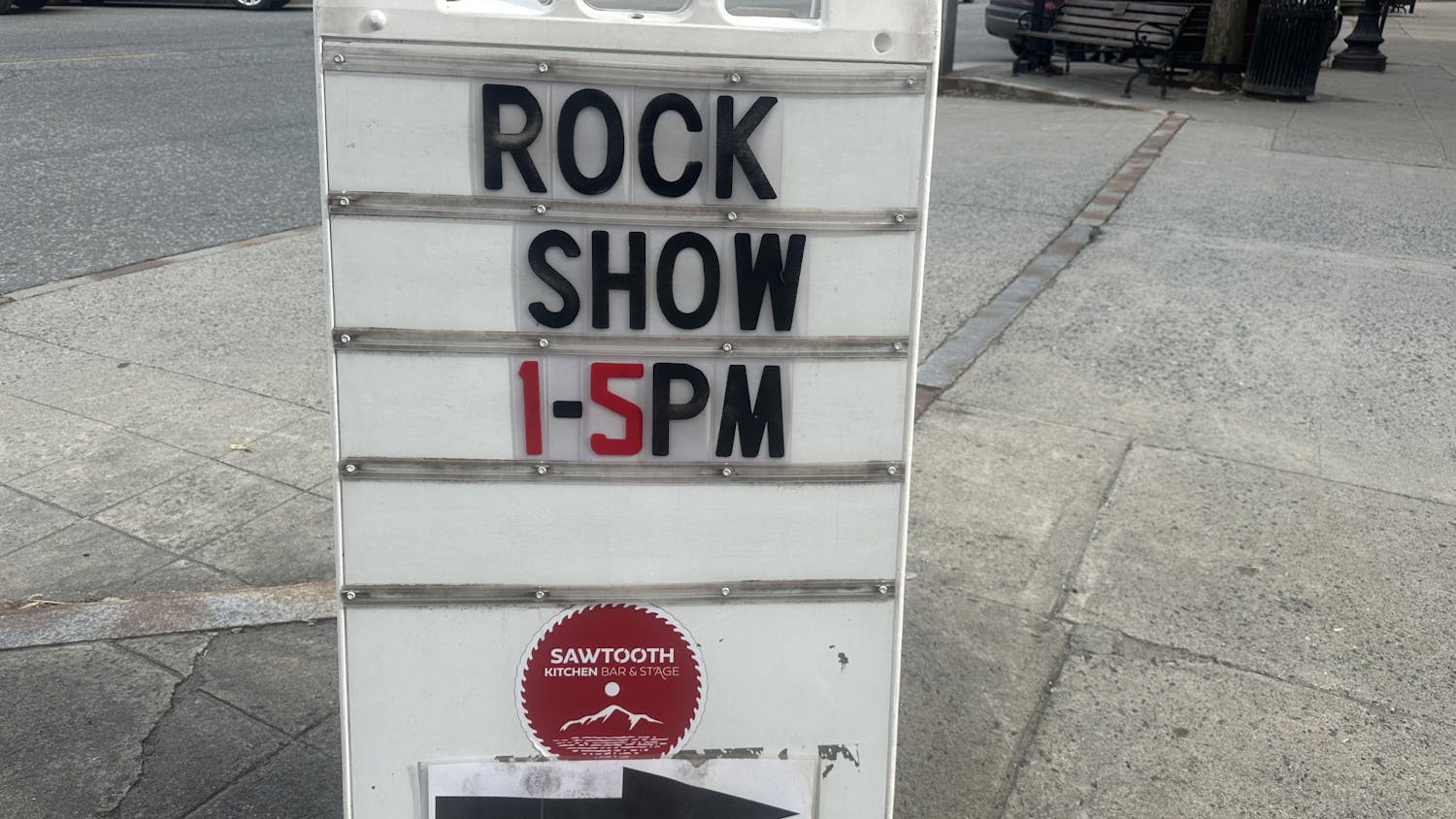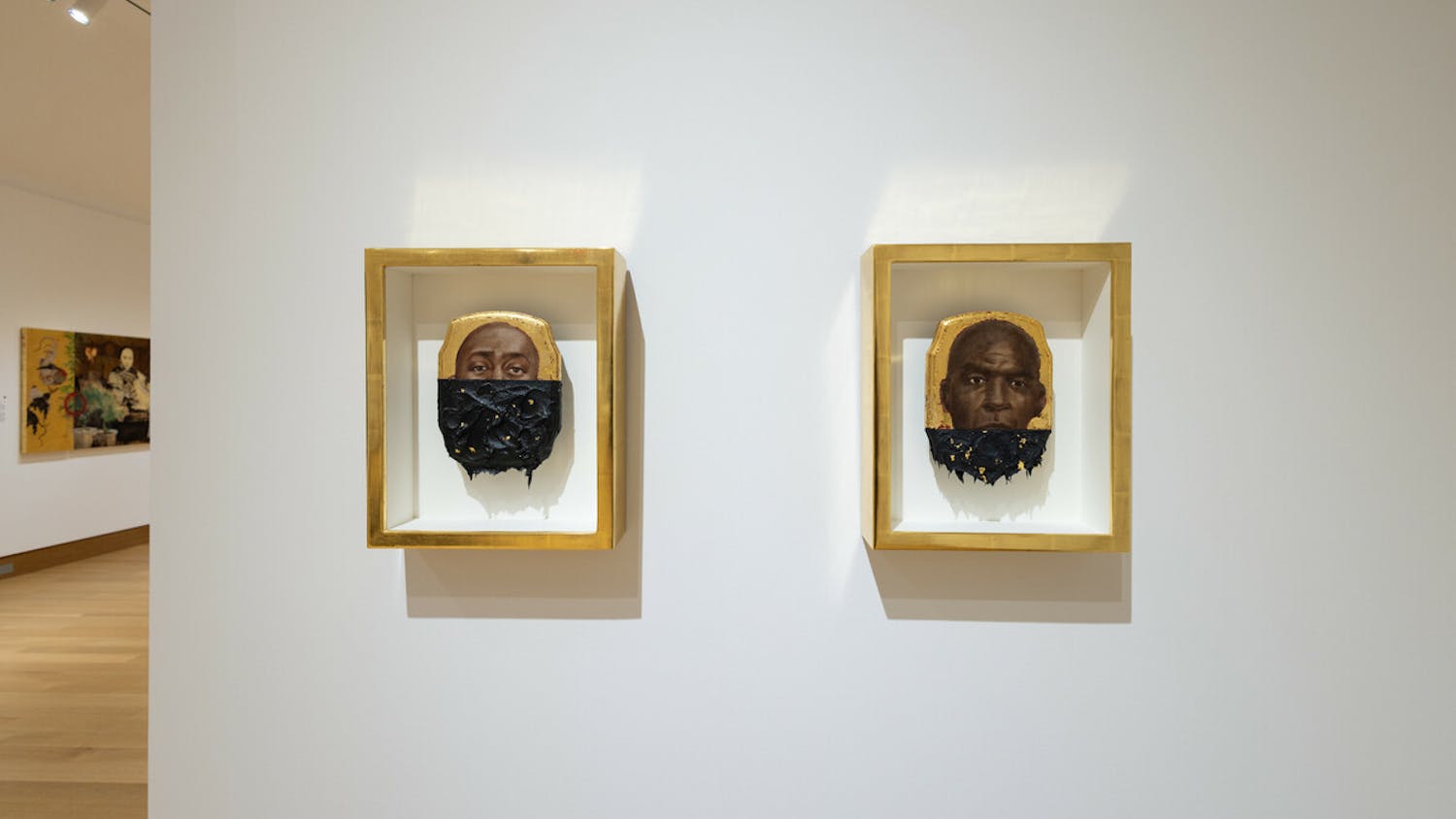Shawn Ahernis the dance captain of Pilobolus Dance Theatre, a modern dance company founded in 1971 at the College. The group now consists of seven full company members and two apprentices. Pilobolus is known for its diverse repertoire, ranging from theatrical pieces to abstract ones. The company has performed in 64 countries, and on programs including the 79th Annual Academy Awards, “The Oprah Winfrey Show” and “Late Night with Conan O’Brien.” Ahern, who has been with the company for five years, performed with the group at the Hopkins Center twice this week.
How would you describe the type of dance?
SA: That’s a hard thing to sum up in a couple of sentences because what Pilobolus does is so diverse both in its repertory and its interests. Pilobolus has historically created a body of work that is ranging from very theatrical to very abstract movement. It has worked especially in the past decade with many different collaborators outside the dance world, so choreographers but also non-choreographers like rock bands, robotics laboratories, artists, graphic novelists, writers, filmmakers, all these different people that have interesting points of view on the world. We invite them into our studio to make the work with us. Collaboration is the defining characteristic of Pilobolus as an arts organization.
What pieces will you perform here?
SA: We will perform five pieces. It’s a pretty characteristically wide range of work. “Sweet Purgatory” will close the evening. That was made in 1991 and it is a work for six people set to [composer Dmitri] Shostakovich. It’s sort of more on the abstract, modern dance side, set to classical music. On the other end of the spectrum we have “All is Not Lost” which is the second piece in the program. It is sort of an up close and personal kaleidoscopic look into a pop song [OK GO’s “All is Not Lost” (2010)]. It’s very much the opposite of “Sweet Purgatory” in many ways, in aesthetic and feel. It’s upbeat and happy and quick. Then we have three other pieces that we made with varying collaborators. “On the Nature of Things” opens the program and it’s a trio set on a small pedestal — we made that in-house. We are also presenting a work called “Atomaton” which features six dancers and some large mirrors. It deals with how humans interface with technology and this search to find ourselves again away from these devices that consume us. Then we have a very theatrical piece called “The Inconsistent Peddler.” That takes a look at a fading patriarch and his struggles to find a peaceful ending with his family. It is a really comical but ultimately touching look at people. I think that is really what Pilobolus is looking to do — investigate people interacting with other people.
Are props a big part of your pieces?
SA: Pilobolus is always evolving and changing. Just like natural organisms that are deeply a part of the company’s history, Pilobolus as an arts organization, or organism, as we lovingly refer to it, is constantly changing and growing, and I think that is how it has managed to stay relevant over almost 45 years of being in existence since it started here at Dartmouth. Technology and props are something that we see more of in our daily lives, and I think that is being reflected in art. So in many of the recent works you see a heavier use of equipment outside of the bodies of dancers, but even some of the new works, like “On the Nature of Things,” have no prop manipulation or anything like that.
What are your costumes like?
SA: Costumes are everything from naked to three-piece suits and crazy outfits and everything in between. Because everything we make comes out of improvisation, we start making the movement before we have a plan of what we are going to make, props and costumes usually come in much later. Frequently the movement develops and an idea forms around that movement and then characters are sometimes created in and out of those ideas.
How varying is the dance background of the dancers in the group?
SA: It’s non-traditional in that way. Not all of the dancers, especially historically, have had dance training. Currently, most of us have some sort of formal dance education, but not all of us. Some of us started dancing later in life, around 20s, college age. Some of us do have very intense ballet training, classical training and I think that all of these approaches are valid. If you have an able body and an able mind and you are flexible enough to use those tools in an interesting way, you can be a good Pilobolus dancer. It is about training your body and your mind to be expressive and supple and there are many ways to get there.
How long does it take to create a dance?
SA: We are sort of product-oriented — our process is very important to us, but at the end of the day we have deadlines. Typically we budget for ourselves about a week for the creation process for every dancer, so if we have a six person dance we allow about six weeks. So on average it is about four to six weeks to create a dance, which will be on average 15 to 20 minutes.
You said you are using a piece from 1991 — is that the oldest piece you will use?
SA: We have pieces from 1971 that we are still dancing.
Do you modernize them or leave them untouched?
SA: That’s an interesting question because I think that the people that are in the room during the creation process create those works, but when you are resetting them, it’s not like taking a painting out of storage and tacking a nail on the wall — you have to repaint the painting. The dancers that you are using are different and they have lived and trained in a different time, so you are trying to do the original choreography justice and trying to recapture what it’s about, but it will be different by nature of being in a different time and with different people. That’s sort of part of the dancers’ jobs when they are learning a piece that they were not part of creating, to use their artistry to do justice to the original choreography and bring their own artistry to it, to give it life again.
What is your favorite part of performing and traveling with Pilobolus?
SA: I think that the way that I am able to interact with people on tour, because of the history of this company. When travelling as a recognized member of Pilobolus Dance Theatre, people will invite you into their home and they want you to see where they live and to experience their culture. It’s a very beautiful thing that is a nod to the fact that Pilobolus has created something beautiful in the breadth of its work over the past 45 years. It is not just the joy that audiences feel when they are watching the dances, it’s something about this creative collaboration that defines the group and has since the 1970s. I think it’s something about the ethos of the company that people identify as a positive force. So I would say those positive interactions on-stage and off-stage as well is really a beautiful thing to be a part of.
This article has been condensed and edited.



